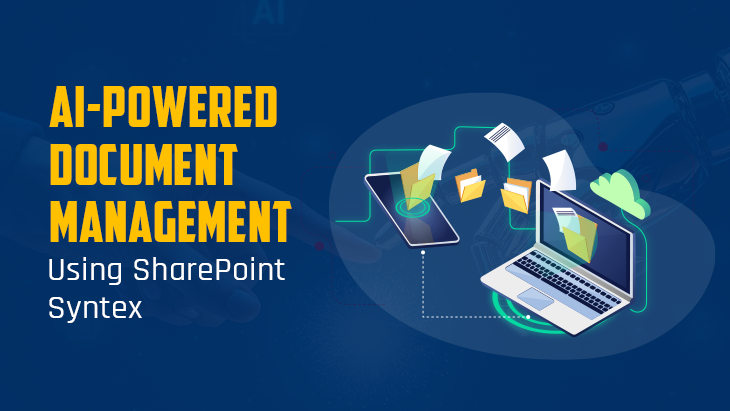Elasticsearch can be defined as an open-source full-text search and analytics engine which is highly scalable. Elasticsearch permits you to do major tasks like search, store as well as analyse huge volumes of data that too very rapidly and also in real time. Elasticsearch is very crucial as the amount of data in circulation is increasing day by day and so are the complexities to manage that data.
Many products involving search engines along with huge volumes of data face multiple issues like longer retrieval time of the information, because of this increased time users are put off and instead of becoming potential customers they turn away from the product.
That is the reason why products are going for data storage alternatives that promote swift retrieval too, like Elasticsearch.
The Elasticsearch is majorly made use as an underlying engine or a technology which basically provides power to applications which possess difficult to understand search components as well as needs. The analytics engine, Elasticsearch offers right on top of Lucene, StandardAnalyse a distributed system. This is done for successful indexing and also guessing using the automatic type while utilising a REST API that rests on JSON, to refer to the features of Lucene.
Elasticsearch because of its understandable defaults and its ability to cover up difficulties from a beginner is extremely easy to configure. As Elasticsearch comprises of short duration learning curve for learning the basic features, it is very easy for a person to reap benefits with just a small effort.
Elasticsearch is taking a position of a NOSQL DB as :
- it is very easy-to-use
- possesses a nice community
- it is compatible with JSON
- it offers backend components
Now to understand Elasticsearch and how it works and the uses it offers, it is crucial to understand its major backend components which are as follows :
NODE-
The Node can be explained as a solo server which is part of a cluster. Node helps to store our data and is a major participant in the indexing and search capabilities of a cluster. As it is in the case of cluster, node can be found out by a name. This name by default is a random UUID or an Universally Unique Identifier. This UUID at the time of start is given to the node. Although the default node names can definitely be changed if you wish.
CLUSTER-
A group of one or more nodes which conjointly clasps whole of your data, and along with it offers search capabilities and federated indexing is known as a cluster. So basically, there can exist any number of having an identical cluster name.
The entire Elasticsearch operation takes place in an environment which is completely distributed and also cross-cluster replication.
INDEX-
A collection of documents having the same characteristics is known as an Index. So an index can be for a particular customer or it can relate to the information of a particular product. To identified an index you can do it by its unique name. This can happen during indexing search, update, and also while deleting the operations. We can define any amount of indexes in a solo cluster. Index bears the same resemblance to database in an RDBMS.
NRT or NEAR TIME-
The highly scalable analytics search engine, Elasticsearch is near real time and there is only a slight from the time of indexinga document till the document becomes successfully searchable.
DOCUMENT-
The basic unit of information which can be indexed is known as a document. So you can possess an index concerning your product along with a document for a particular customer. That particular document is conveyed on JavaScript Object Notation or JSON. This JSON is an ubiquitous internet data interchange format. So in an index, you can keep as many documents, likewise in the same index you can keep a document for a particular product, also one more for a single order.
SHARD AND REPLICAS:
The Elasticsearch offers you an ability to subdivide your index into different small pieces which are known as shards. So at the time of creating an index, you can very easily define how many total shards that you wish. Every shard is something that is completely functional and also a completely independent index. This index can be hosted on any node in the cluster. In order to divide the data volume horizontally, shards play a vital role. This split happens in different nodes affecting the operation but enhancing the performance.
Shards can be defined as the sub set of documents existing in an Index.
Kibana : this is an open source data visualisation plug in for Elasticsearch that assists as an exploration tool to time series and log the analytics. The components of Kibana are : pie charts, histograms, heat maps etc. Kibana is completely free to use and provides powerful geospatial abilities to the user.
BENEFITS OF ELASTICSEARCH-
Following are the major benefits of Elasticsearch :
Proper & Easy Management of data: Elasticsearch helps in proper management of huge volumes of data. Unlike the normally used SQL data management systems which take more than 10 seconds, Elasticsearch takes less than 10 ms.
Easy & Swift access: as the storage of documents is done near the corresponding metadata of the index, it greatly brings the time down of data read and thus the search result response is also enhanced.
Highly Scalable: Elasticsearch permits many servers to scale up and carry petabytes of the data. It is all done automatically easing the work of customers.
CONCLUSION:
Elasticsearch is very important in today’s times where products need lesser time to pop up in search engines and also provide flexible data model to create and update the profiles of visitors. It has the required attributes to meet the ever increasing and demanding work load. When the users have more than away to index documents then by making use of Elasticsearch they can do it in the best way possible.
















Post Comments